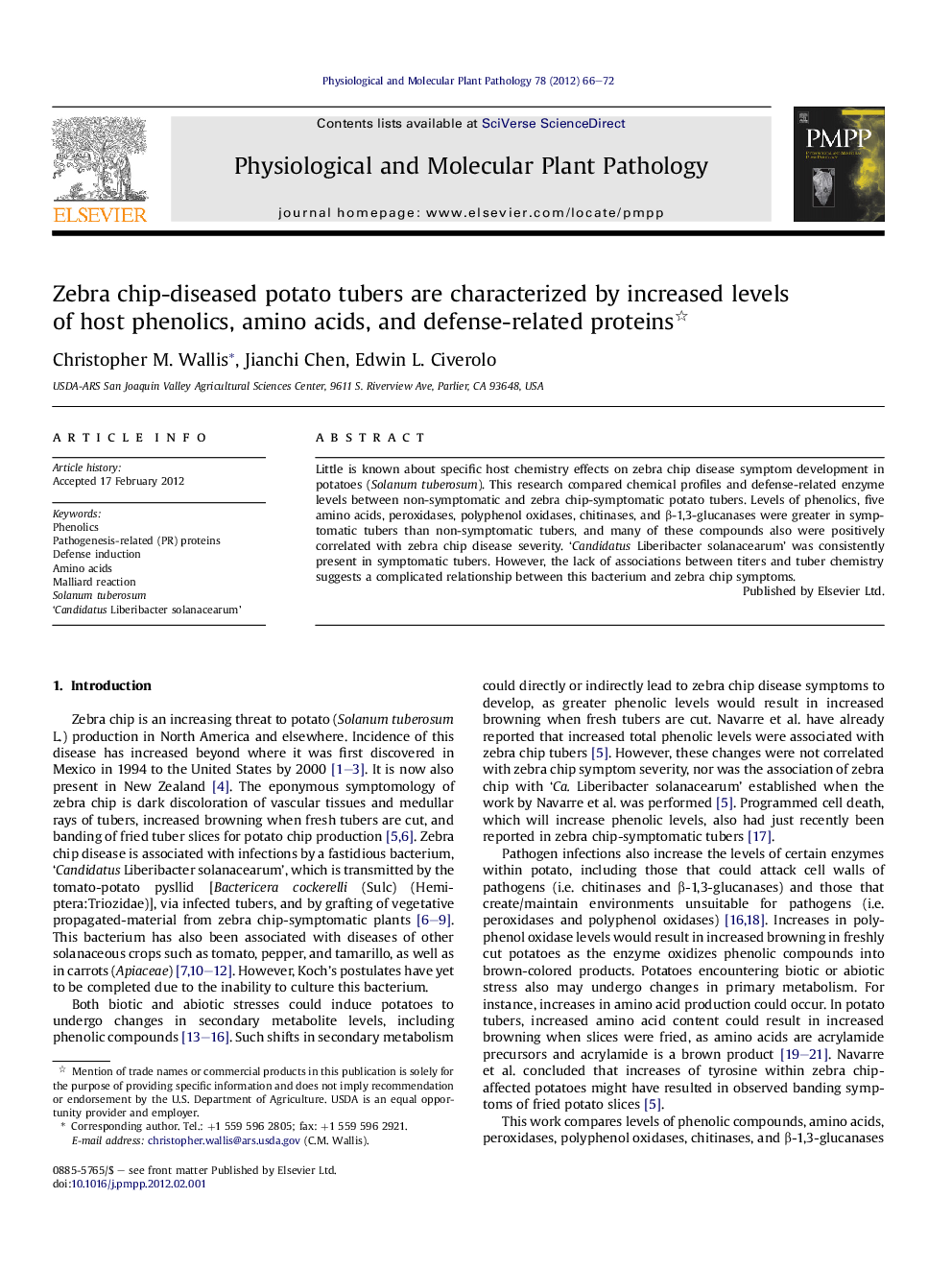| Article ID | Journal | Published Year | Pages | File Type |
|---|---|---|---|---|
| 2836462 | Physiological and Molecular Plant Pathology | 2012 | 7 Pages |
Little is known about specific host chemistry effects on zebra chip disease symptom development in potatoes (Solanum tuberosum). This research compared chemical profiles and defense-related enzyme levels between non-symptomatic and zebra chip-symptomatic potato tubers. Levels of phenolics, five amino acids, peroxidases, polyphenol oxidases, chitinases, and β-1,3-glucanases were greater in symptomatic tubers than non-symptomatic tubers, and many of these compounds also were positively correlated with zebra chip disease severity. ‘Candidatus Liberibacter solanacearum’ was consistently present in symptomatic tubers. However, the lack of associations between titers and tuber chemistry suggests a complicated relationship between this bacterium and zebra chip symptoms.
► Specific changes in tuber physiology may result in zebra chip symptom formation. ► Symptomatic tubers were analyzed for phenolics, amino acids, and defense proteins. ► Phenolic and amino acid levels were greater in symptomatic than non-symptomatic tubers. ► Defense-associated protein activity was also greater in symptomatic tubers. ► Increases in these compounds are associated with zebra chip symptom development.
